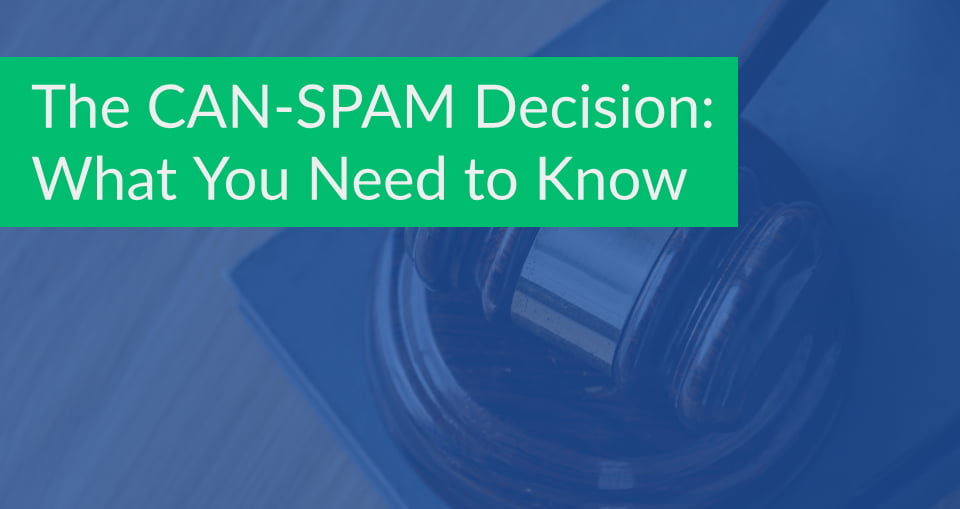A lot of things have changed in the last couple years. For better or worse, the CAN-SPAM Act isn’t one of those things.
On February 12, 2019, the Federal Trade Commission announced that it unanimously voted to keep the CAN-SPAM Act in place as-is.
A Bit of Backstory
Back in 2017, the FTC set out to review the CAN-SPAM Act. sought public comments on the role of the CAN-SPAM Act. From their February 12 press release:
As part of its regular, systematic review of all its rules and guides, the FTC in June 2017 sought public comment on the Rule, including whether it is still needed, the costs and benefits of the Rule, and whether changes needed to be made to the Rule in response to technological and economic developments. The FTC also sought comment on three specific issues related to the CAN-SPAM Rule, including whether the Commission should change the categories of messages treated as “transaction or relationship messages,” shorten the time period for processing opt-out requests, or specify additional activities or practices that might be considered as aggravated violations.
Through our membership in the Online Trust Alliance, UnsubCentral contributed to one of the official responses, which you can read here. Long story short, we recommended in 2017 that the CAN-SPAM Act stay in place, albeit with a few clarifications. Of course, as we discussed here on the blog at the time, our recommendations align with email marketing best practices you should already be following.
Go Beyond CAN-SPAM Compliance in 2019
According to the FTC, the public comments received “overwhelmingly” supported keeping CAN-SPAM in place. But that’s not to say that the public is necessarily in favor of the status quo; in fact, many consumers feel that the CAN-SPAM Act doesn’t go far enough.
Rather than look at the FTC’s decision as a way to justify the current state of your email compliance, why not take a cue from the consumers who don’t think CAN-SPAM is strict enough and go the extra mile anyway?
As we originally recommended in our comments to the FTC, here are a few ways you can go beyond the bare minimum standards required by CAN-SPAM to make sure your email list (and your opt-outs) are happy.
- Avoid using images for your unsubscribe links. The CAN-SPAM Act requires clear unsubscribe links, but the Online Trust Alliance recommends that these links be text-only. Images may break, and some subscribers may never load images in the first place. Regardless, you want to be sure subscribers see your link; otherwise, they may just mark your email as spam.
- Honor opt-outs promptly. While CAN-SPAM requires you to honor opt-outs within ten business days, the reality is that most unsubscribers expect to be opted out almost immediately. Don’t wait; avoid hits to your brand reputation by honoring unsubscribes as soon as possible.
- Use preference centers to allow subscribers to opt out of all communication. The OTA recommends offering a way for subscribers to quickly unsubscribe from all email with a single option. You can use a preference center to provide your email list with this choice, while also leaving the door open for them to opt into a different newsletter or sending cadence. It may even save you from earning an unsubscribe at all.
By keeping your subscribers and unsubscribers happy, you prevent your email program from harming your brand reputation.
Plus, if the FTC ever does decide to update CAN-SPAM, you’ll have a pretty good head start on compliance.


